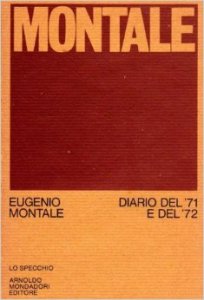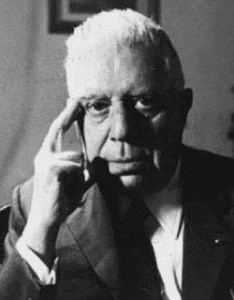I’ve been working on some translations today. Two poet friends are going to be starting a new on line magazine next spring, and translations will be a feature. I was pleased when one of the editors remembered I’ve done some translating before and asked if I had anything for them to consider.
As of this morning I only had one piece – a poem by Eugenio Montale
from his ‘Ossia Di Seppia’ or ‘Cuttlefish Bones’. But tonight, after a day’s work, I have three short translations in total, one from his early work, one from his middle period and one from a late collection.
I haven’t read much Montale, but I’m very much drawn to his work and am particularly interested (at the moment) in his sorter poems. The ones I have read are incredibly dense and intense. Some sound as if he is muttering to himself. They also contain humour, transcendent images taken from both nature and urban settings, and what seem to be grumpy asides about media and the state of things, sometimes all in one poem. As you can tell, I’m not a scholar of the poet’s work, but I’m looking forward to finding out more.
My translation ‘technique’, such as it is, involves finding a translation of poem that intrigues me and comparing it to the original Italian version.
I speak and read a little Italian (my mother was born there) and I recognise quite a few words and can have a good guess at others. I do also have some idea as to how the words should sound when spoken.
When I’ve found an English translation that I’m interested in, I start to compare it to the Italian version. Often I’ll look for more than one translation with a view to getting ideas of how a translation can be done.
Translations can vary widely and it’s good to compare and contrast styles. Essential tools are a Thesaurus and an English/ Italian dictionary. These are of course also available on-line, together with tools that translate blocks of text. Some of translation tools come up with very funny ideas, but even odd words can be useful to note as potential areas to research. Associations can led to interesting alternative words being found. As well as the above I need a few free hours and a lot of concentration.
I am interested in whether the translation has captured the music of the original, whether it is fluid and fluent or a little stilted. I want to consider the sense of the poem and see if it has been lost or corrupted slightly, to see if word choices are literal translations (not always possible) or if they are overblown. I want to see how the structure of the translation compares to the original and if, when moving the poem into English, it might be better to change the original shape. I’ll look at whether the translator has kept archaic or outmoded touches or used language that, although ‘accurate’ has dated, and if so does this work. I’m quite interested in bringing references up to date, to re-fresh the poem a little much in the way a cover version of an old song might use contempoary production techniques. It’s hard to explain what I mean without giving examples, and I’ll show you some whole poems and different translations another time.
I want to see if the emotion and/or atmosphere have been carried over.
I might fall in love with the potential I see in the translation but think it would be interesting to re-write with reference to the original. It might be a word or two that doesn’t seem to have the right tone, or maybe a section lacks clarity, or maybe the whole translation doesn’t feel right. If I’ve found something to spark my interest then I’ll start work.
Today I seemed to be in the right frame of mind for the work, drafting lines quite quickly, researching, considering different word orderings, leaving out phrases, reinstating them. A herd of goats in one poem was literally described as ‘disruptive’. I tried unruly, rowdy and settled on raucous. I also added to the visual clarity of the image by having them ‘gambol’ across the road, something not in the original. For ‘ravine’ I have substituted ‘crag’- I feel closer to the word, and it seemed on a smaller scale, which I liked. English is so rich and allows the translator to find words of Germanic origin to replace and to mix with the Latinate. It’s great fun and extremely rewarding.
This same poem (the one with the goats) also led me to research in flora and fauna as I tried to match the goat’s dinner (they browse in my translation- I’ve gone for the more obvious and familiar ‘graze.) Various words for plant life- the wonderful ‘falasco’ and ‘di pruno’ among them,
led to reading about and consideration of heather, prickly burs, bramble and thorn bush, blackthorn, marsh grass, broom, sedge and sloes.
Montale in his youth.
I’m pleased with the result, even though I had to sacrifice a few words which conveyed a lot in Italian but were difficult to render concisely in English.
Whether the editors like my translations or not, I’ve very much enjoyed the challenges presented by working on these poems. I was also able to revisit the poem I had worked on last year or the year before, and because I was in the right frame of mind, was able to improve it with a few small changes.
If any of these poems appear in the future I’ll share them here.
In the meantime here is a link to a some translations I did a while ago for Leafe Press’ Litter magazine. These two are from a contemporary Italian poet, Andrea Inglese.




My wife’s Italian. I struggle to read the odd novel and poem in Italian. More often I read translations of Italian poetry. I’ve tried translating Alda Merini etc into English, and some of my stuff into Italian, but I’ve never sent anything out. I’ve got loads of old Poesia mags. If you’re going to be at Free Verse I’ll bring a bag down.
LikeLike
Thank you Tim, a very kind offer. I was at Free Verse last year but won’t be able to make it this time. Thanks again.
LikeLike
Nice, clear and de-mystifying description of a process I recognise – thanks Roy
LikeLike
Thank you very much Martyn, I’m very pleased you thought so. Best, Roy
LikeLiked by 1 person
Well……who knew it. I knew you were talented. But……………..
Mind you, I prefer ‘browse’ to ‘graze’ xxxxx
LikeLike
Humm. The old ‘browse’ versus ‘graze’ debate John. Such is the nature of translation.
LikeLike